- About MAA
- Membership
- MAA Publications
- Periodicals
- Blogs
- MAA Book Series
- MAA Press (an imprint of the AMS)
- MAA Notes
- MAA Reviews
- Mathematical Communication
- Information for Libraries
- Author Resources
- Advertise with MAA
- Meetings
- Competitions
- Programs
- Communities
- MAA Sections
- SIGMAA
- MAA Connect
- Students
- MAA Awards
- Awards Booklets
- Writing Awards
- Teaching Awards
- Service Awards
- Research Awards
- Lecture Awards
- Putnam Competition Individual and Team Winners
- D. E. Shaw Group AMC 8 Awards & Certificates
- Maryam Mirzakhani AMC 10 A Awards & Certificates
- Two Sigma AMC 10 B Awards & Certificates
- Jane Street AMC 12 A Awards & Certificates
- Akamai AMC 12 B Awards & Certificates
- High School Teachers
- News
You are here
Mathematical Treasures - Margarita philosophica of Gregor Reisch
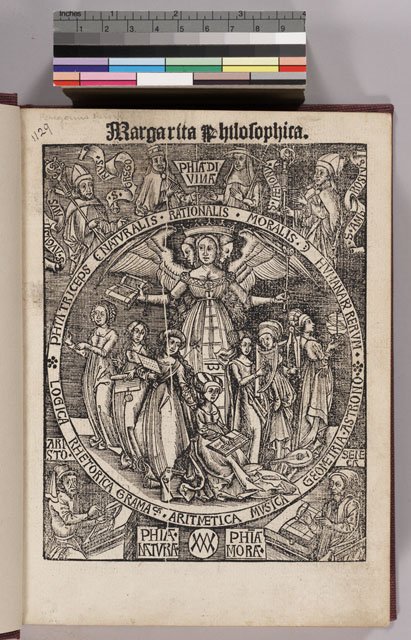
This is the title page of the Margarita philosophica (Pearl of Wisdom) of Gregor Reisch (1467 - 1525). The first edition was published in 1503. This work was used as a university textbook in the early sixteenth century. Among its twelve chapters are seven dealing with the seven liberal arts commonly taught at the universities: the trivium of logic, rhetoric, grammar and the quadrivium of arithmetic, music, geometry, and astronomy. There are also several chapters on more advanced topics. Most of the chapters have engravings dealing with the chapter's subject matter, some of which are included below.
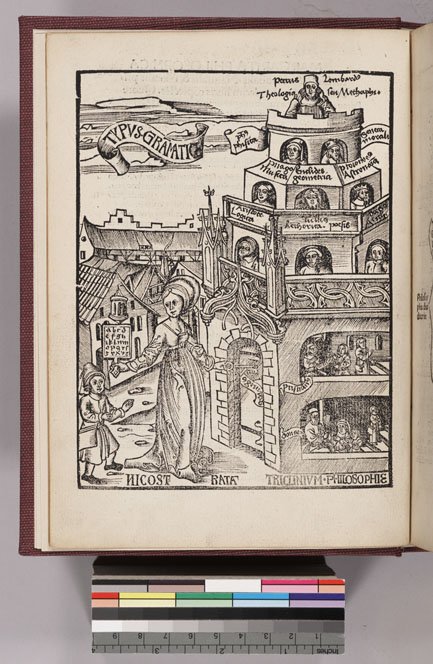
This is the engraving depicting Grammar, often called the Tower of Learning. Reisch depicts Grammar, the foundation of all learning, as Nicostrata (legendary inventor of the alphabet) holding a hornbook and key and introducing a child into a tower of learning with six levels. Toward the top of the tower are portraits representing the subjects of the trivium and the quadrivium.
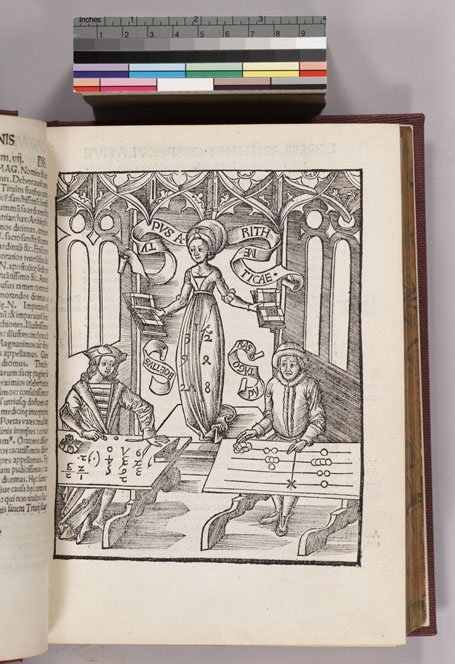
This is the classic engraving of Arithmetica (or the Allegory of Arithmetic) supervising a contest between Boethius, representing written calculation using Hindu-Arabic numbers, and Pythagoras, represented as using a counting board.
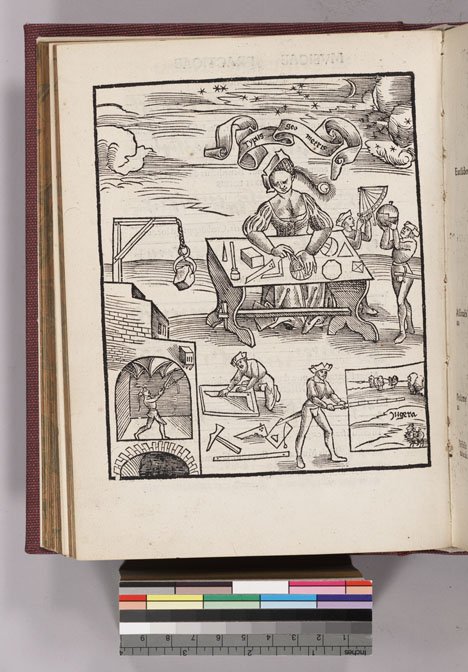
Here is an illustration from the geometry chapter (Allegory of Geometry) illustrating various geometric figures as well as geometric instruments.
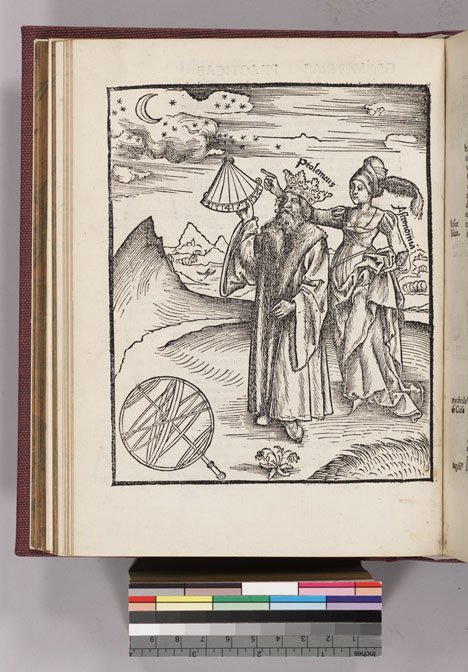
At the beginning of the astronomy chapter is the Allegory of Astronomy, that is, the image of Astronomia instructing Ptolemy on measuring the heavens by the use of the quadrant.
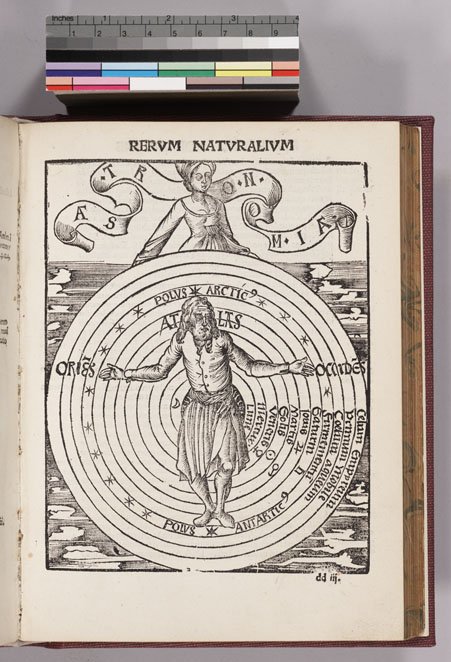
Also, in the astronomy chapter, there is an image of the Ptolemaic (and also the medieval) version of the geocentric universe. Note that man is in the center of the universe.
Editor's note: This article was posted May 14, 2008.
Frank J. Swetz and Victor J. Katz, "Mathematical Treasures - Margarita philosophica of Gregor Reisch," Convergence (January 2011)




